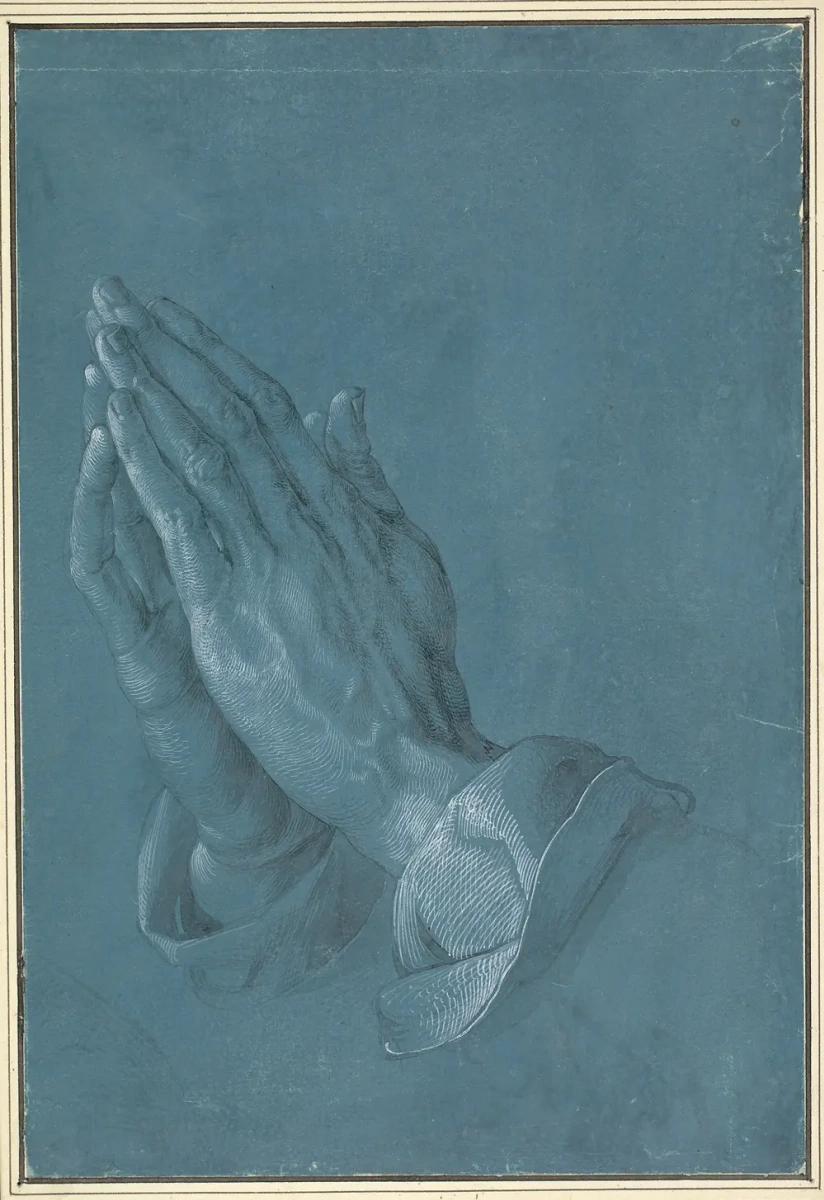Руки молящегося (Руки апостола)


















Описание работы «Руки молящегося (Руки апостола)»
«Руки молящегося» — один из самых известных рисунков всех времён.
Главный куратор венской Альбертины Кристоф Мецгер говорит, что по популярности он уступает разве что «Витрувианскому человеку» (ок. 1490) Леонардо да Винчи.
Спустя более пяти веков репродукции произведения Дюрера по-прежнему украшают домах миллионов людей, — в качестве религиозных икон. В то же время сам Альбрехт Дюрер нарисовал знаменитую работу для рекламы, утверждает Мецгер. И это законченная работа, а не подготовительный рисунок, и на ней — руки самого художника.
С XIX века считалось, что руки были предварительным этюдом для фигуры апостола в нижнем правом углу центральной панели алтаря Геллера (завершён в 1509 году). Он назван так в честь заказавшего его торговца из Франкфурта.
Оригинальная доска была уничтожена пожаром в 1729 году, но сохранилась хорошая копия, выполненная Джобстом Харриком и теперь находящаяся в Историческом музее во Франкфурте.
Мецгер утверждают, что учёные ошибаются: зачем Дюреру было делать отдельный детально проработанных рисунок лишь для того, чтобы уменьшить его до крошечной детали на расписанном алтаре? «Работа представляет собой чудо наблюдательности, и она слишком амбициозна, чтобы быть просто предварительным наброском, — говорит он. — Дюрер сделал этот „мастер-рисунок“, чтобы демонстрировать посетителям своей мастерской пример дарованного Богом таланта».
По словам Мецгера, «Руки молящегося» и несколько других рисунков были созданы «для рекламы» и демонстрировались потенциальным клиентам, чтобы те поняли, какого качества заказы может выполнить художник.
Куратор Альбертины также считает, что на рисунке изображены руки самого Дюрера. «Очень тонкие пальцы и ладони похожи на те, что мы видим на автопортрете 1500-го года из мюнхенской Пинакотеки. На рисунке у мизинца частично скрытой руки слева, похоже, искривление или уплотнение суставов, что показано на других автопортретах, таких как рисунок 1498 года из Метрополитен-музея», — сказал Кристоф Мецгер.
Влад Маслов (Артхив), по материалам The Art Newspaper
P.S. В интернет-сети широко распространена полностью вымышленная сентиментальная история о том, что, дескать, Дюрер изобразил руки своего брата. Читайте материал Оксаны Санжаровой в Артхиве: Арт-фейк с разоблачением. Руки "брата Дюрера", каменоломни и бедное семейство


